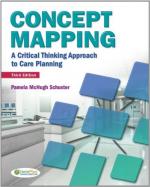|
This section contains 338 words (approx. 2 pages at 300 words per page) |
A contig is a continuous region of a gene, chromosome, or genome that is derived from a set of overlapping clones or sequenced fragments of DNA.
Contigs are used to help in the construction of a physical map of various genomes, including the map of the human genome. In this clone-based approach, several copies of genomic DNA are partially digested into fragments by site specific restriction endonucleases (enzymes that cleave specific DNA sequences). A partial digestion is performed to prevent every possible recognition site to be cleaved, producing a variety of fragment lengths with random restriction sites left uncut. These segments, spanning between 100-300 Kb (1 Kb=1,000 bases) can be cloned into bacterial artificial chromosomes (BACs).
BACs can then be inserted into bacteria and amplified by growing the bacteria in suspension. This procedure produces clones with identical DNA sequences.
Each clone containing its insert is fully digested using a specific restriction endonuclease that produces a pattern of small fragments. This pattern, or fingerprint, is unique to each clone that contains different fragments. The fingerprint results when the fragments from each clone are separated by size using gel electrophoresis. Comparing the fingerprint patterns reveals overlapping sequences, allowing the different clones to be ordered. The restriction endonuclease recognition sites are carefully charted. Contigs, therefore, represent the sequence specific for genes, chromosomal regions, or whole genome sequences (assembled by melding together overlapping BACs that span the entire genome).
One drawback to clone-based physical maps that these maps produce contigs with poor continuity due to a lack of BAC clones covering all parts of the genome. Furthermore, ambiguous data due to cloning errors or large sequences of repetitive DNA often produces gaps in the map sequence. The technology involved in constructing contigs is continually improving. Technological improvements have allowed larger DNA pieces to be cloning using other artificially constructed chromosome vectors. For example, yeast artificial chromosomes (YACs) can be used to clone DNA fragments up to 1Mb, speeding the rate at which clones are ordered.
|
This section contains 338 words (approx. 2 pages at 300 words per page) |


